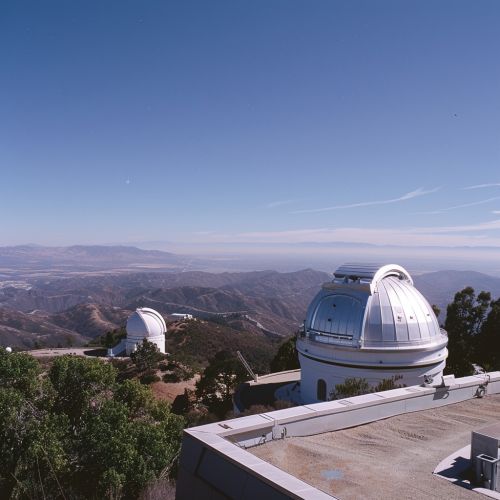Palomar Observatory
Overview
Palomar Observatory is a world-renowned astronomical research facility located in San Diego County, California. Operated by the California Institute of Technology, the observatory is home to several large telescopes, including the 200-inch (5.1-meter) Hale Telescope, one of the largest in the world.


History
The idea for the Palomar Observatory was conceived in the early 20th century by astronomer George Ellery Hale, who had previously overseen the construction of the Mount Wilson Observatory in Los Angeles. Hale's vision was to build a telescope twice the size of the 100-inch (2.5-meter) Hooker Telescope at Mount Wilson, which was then the world's largest.
Telescopes
The Palomar Observatory is home to several large telescopes, each designed for specific types of astronomical research.
Hale Telescope
The Hale Telescope is the most famous instrument at the Palomar Observatory. With a primary mirror measuring 200 inches (5.1 meters) in diameter, it was the largest telescope in the world when it was completed in 1948.
Samuel Oschin Telescope
The Samuel Oschin Telescope is a 48-inch (1.2-meter) Schmidt camera that has been in operation at the observatory since 1948. It was initially used for the National Geographic Society - Palomar Observatory Sky Survey, which produced detailed maps of the northern sky.
60-inch Telescope
The 60-inch (1.5-meter) telescope at Palomar Observatory is one of the largest fully steerable telescopes in the world that is regularly available for public viewing.
Research
The Palomar Observatory has been at the forefront of astronomical research since its inception. Its telescopes have contributed to numerous scientific discoveries, including the first brown dwarf, the first quasar, and several comets and asteroids.
Public Outreach
The Palomar Observatory is also committed to public outreach and education. It offers guided tours, public lectures, and stargazing events throughout the year.
